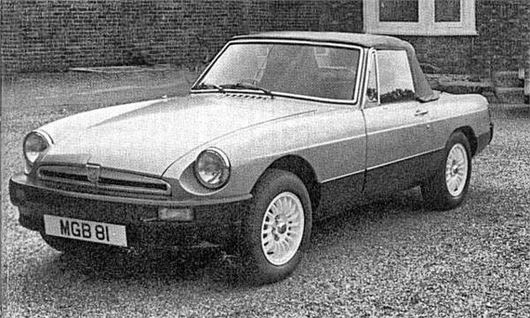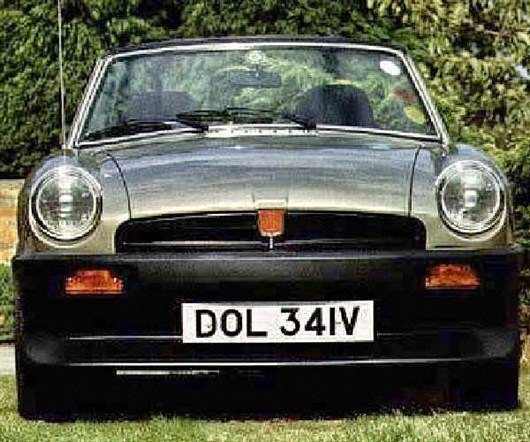Aston Martin MGB

The date of 10 September 1979 became known as 'Black Monday' among MG enthusiasts around the world, because it was the date that BL finally went public with their plans to shut the Abingdon factory, after fifty successful years of sports car production. Shockwaves reverberated around the industry, and it did not take long for several influential enthusiasts to band together and formulate a plan, with which to buy the factory and (they hoped) the MG badge from BL.
By October 1979, the consortium, which comprised of Alan Curtis (chairman of Aston Martin), David Wickens (BCA), Peter Cadbury, Lord George-Brown and the Norwest construction group went public with their plans to save Abingdon. The consortium had at least £30 million at their disposal, with which to buy Abingdon – but they made it clear that going into talks with BL, they wanted to acquire the rights to the MG marque name and the MGB. The reasoning was quite simple – with the factory, the car and the name, they could continue production… there would be no interregnum between BL’s disposal and their taking over of MG
With these plans very much in mind, Curtis went into what can only be described as a battle with BL in order to settle. However, there was what can only be described as a huge stumbling block; and that was the fact that BL wanted to keep the rights to the MG name, and in fact, were tentatively developing their own replacement for the MGB, closely based on the TR7. However, Curtis was adamant that he would be able to gain the marque name and the car (as well as the factory) and had already started work on the company’s own revised MGB.

However, the negotiations dragged on, and finally in April 1980, a deal between the two parties had seemingly been reached. BL agreed that they would sell the Abingdon factory to the consortium, along with the rights to use (but not own) the MG name. The £30 million funding that Aston Martin used in their negotiations with BL, however, now proved a little more elusive – Aston Martin was embroiled in its own financial problems thanks exchange rates (that ironically were a reason cited by BL for the closure of Abingdon). The global recession also meant that some of the financial backers that were initially keen at the end of 1979 were not in a position to make good their promises…
Undeterred, Aston Martin showed it William Towns facelifted MGB to the press in June 1980, stating that it was their intention to launch this as the ’81 model.
Unfortunately, BL closed negotiations at this point, losing patience with the consortium, thanks to their inability to commit financially. That proved to be a black day in BL’s history, because it committed the company to closing Abingdon for good, after selling it off.
During the negotiations, BL formulated its own plans to save Abingdon, which revolved setting up a special vehicles operation there… they came to nothing, and were dropped during the Aston Martin negotiations; probably because of the Aston Martin negotiations.

Compare classic car insurance quotes and buy online. A friendly service offering access to a range of policies and benefits.


 Keith Adams
Keith Adams
 NEC classic motor show 2020 postponed due to Covid 19 concerns
NEC classic motor show 2020 postponed due to Covid 19 concerns
 Classic car auction house Coys goes into administration
Classic car auction house Coys goes into administration
 Motor racing great Sir Stirling Moss dies aged 90
Motor racing great Sir Stirling Moss dies aged 90
 Alfa Romeo anniversary races set for Silverstone
Alfa Romeo anniversary races set for Silverstone
 Government to make E5 fuel available for classic owners
Government to make E5 fuel available for classic owners
 Plans to introduce cleaner fuel could damage more than a million classic cars
Plans to introduce cleaner fuel could damage more than a million classic cars
 Top 10: Classic cars from the Gulf motor racing heritage collection
Top 10: Classic cars from the Gulf motor racing heritage collection


